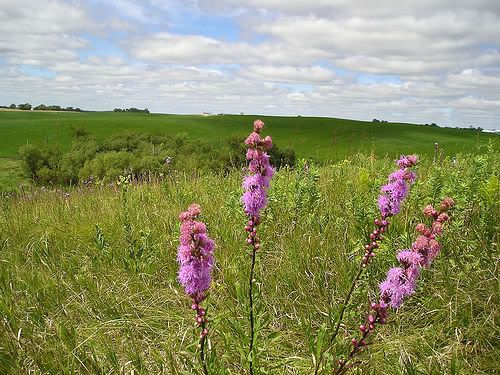A Weedy Outlook On Nitrogen
/https://tf-cmsv2-smithsonianmag-media.s3.amazonaws.com/filer/6a/f6/6af623b9-dc0d-42c3-886b-7f7d7ff0de9b/screen_shot_2018-02-27_at_125613_pm.png)
Could nitrogen harm plants? Seems like an odd proposition. Fertilizer, after all, is usually nitrogen based, and its increased use has been the major driver of agricultural booms across the world. Heavy loads of nitrogen, however, allow certain weeds to grow with a vengeance, often overwhelming slower-growing species (like the blazing star, pictured above).
This nitrogen-caused loss of biodiversity was the subject of a long-term study published in last week's Nature. For a 20-year period, ecologists from the University of Minnesota, St. Paul studied plant species in a Minnesota prairie. They found that plots exposed to low-level nitrogen deposits—as little as 10 kilograms per hectare per year, added to the region's baseline 6 kilograms per hectare per year—had significantly fewer plant species than control plots that weren't exposed to the nitrogen. The researchers were surprised that the effect was so pronounced, telling Nature News: "Low rates of nitrogen deposition matter much more than everyone thought."
For some of the affected plots in the Minnesota study, the researchers were able to restore biodiversity levels by seriously cutting back on the nitrogen deposits—but this full recovery took 13 years.
The results are especially relevant when you consider that the researchers used nitrogen levels comparable to what's found in most of the industrial world, not only from over-fertilizing but from factory and automobile pollution.

(Hat tip: News@Nature; Photo: Flickr, by Blaine Hansel)